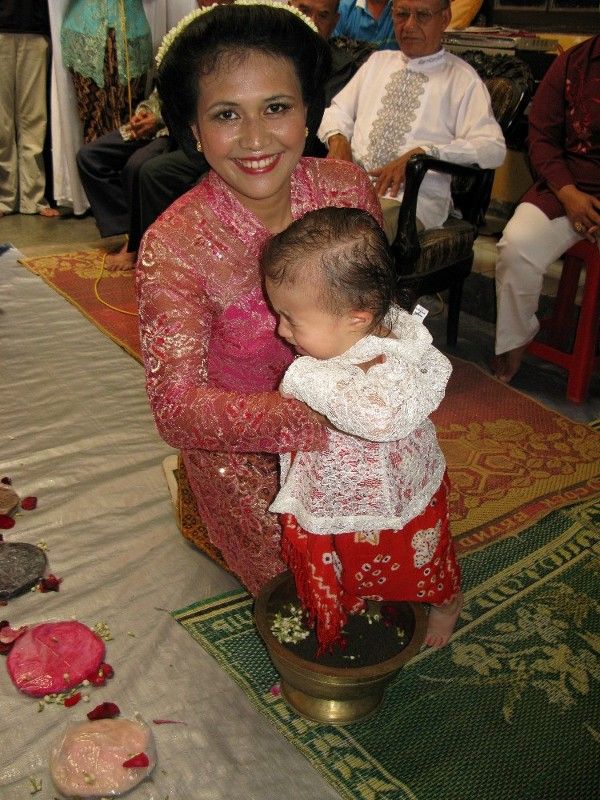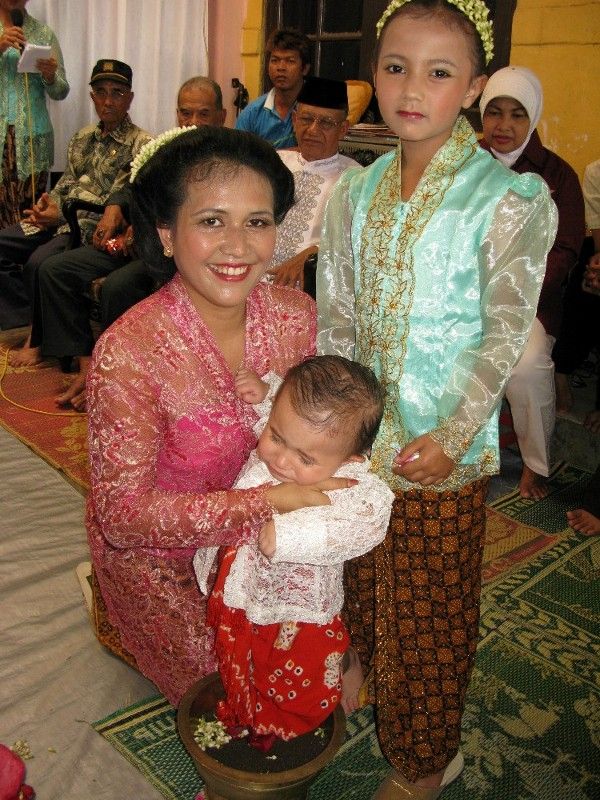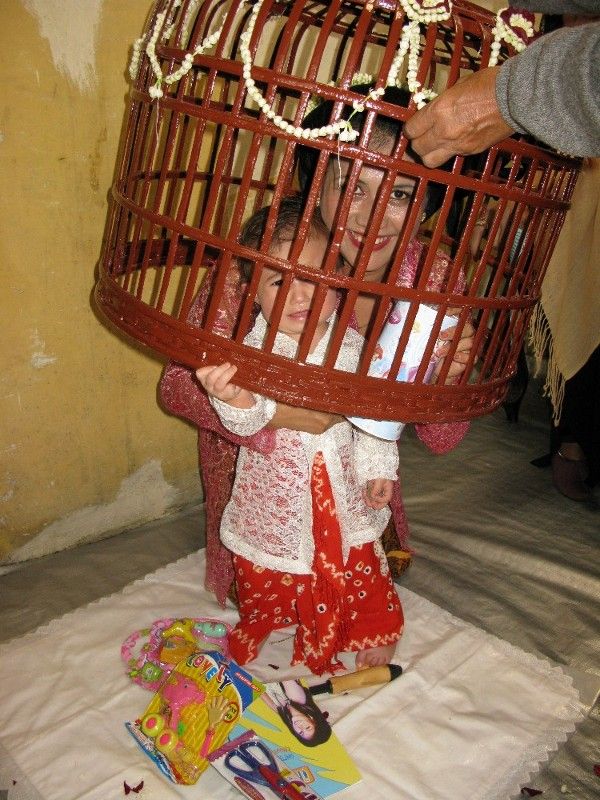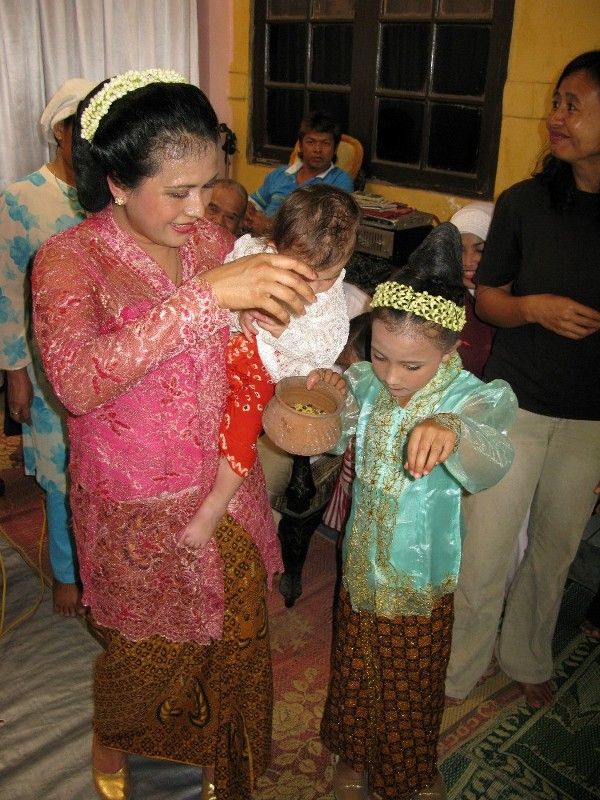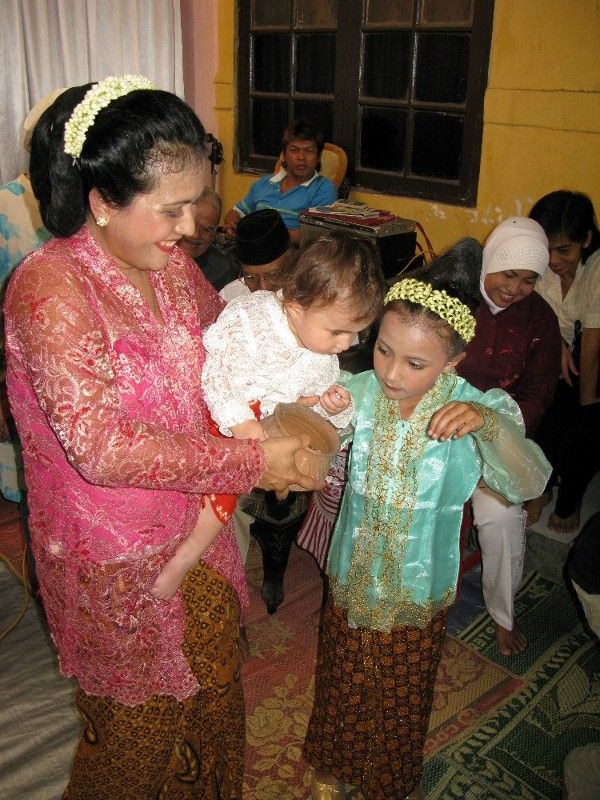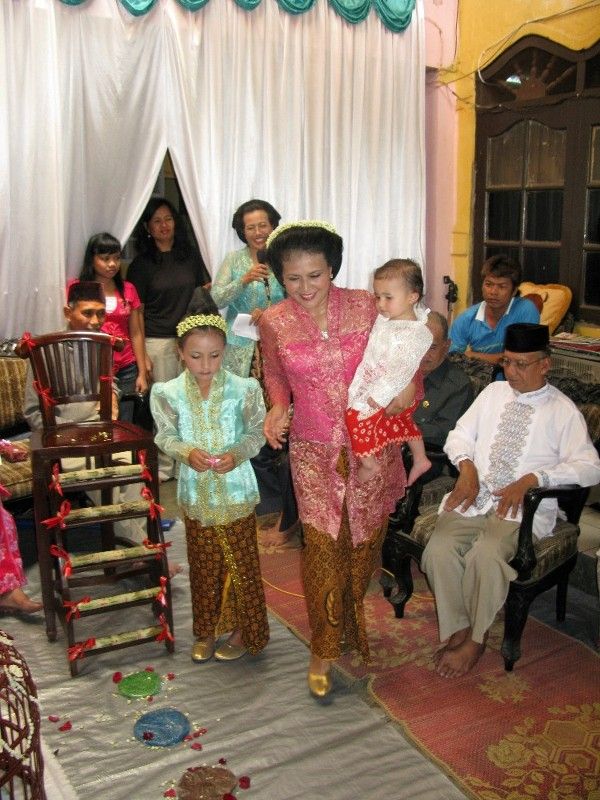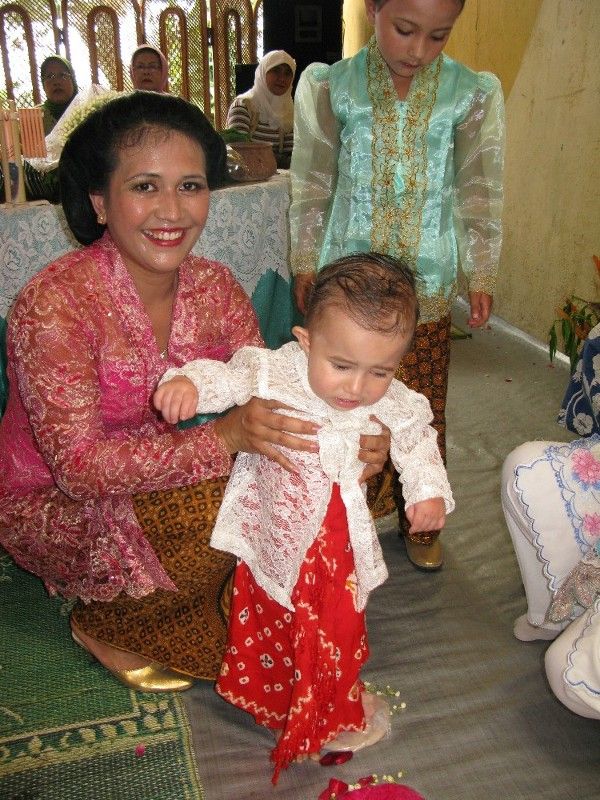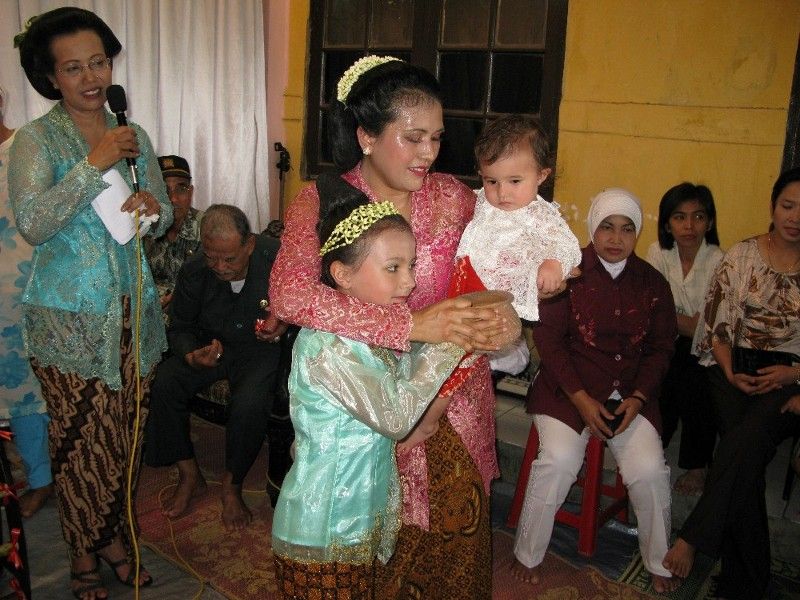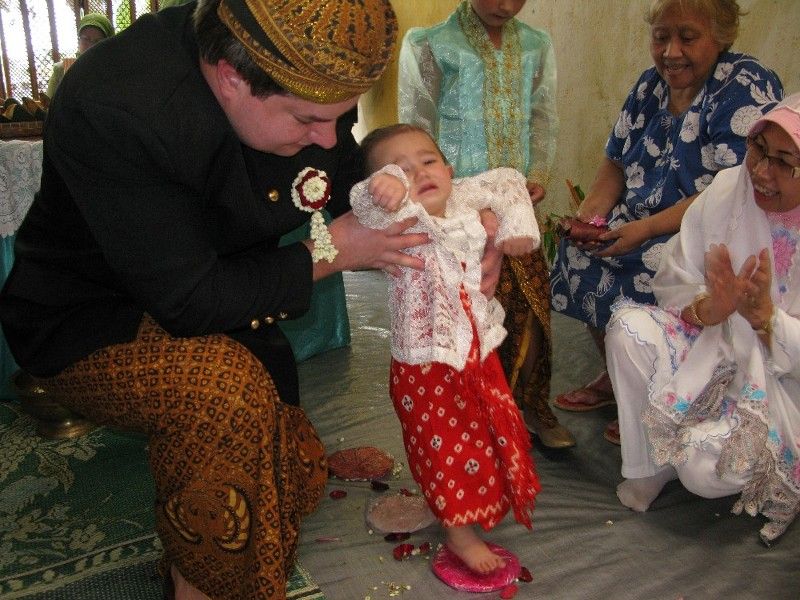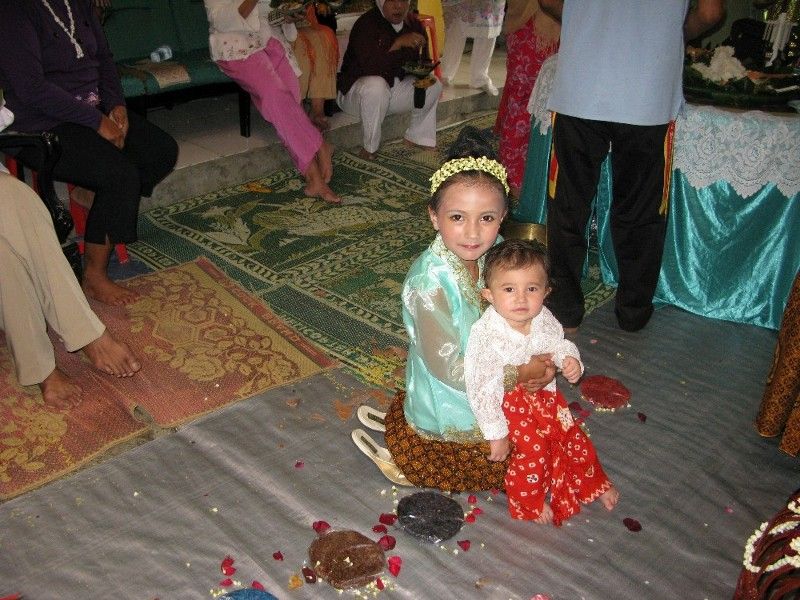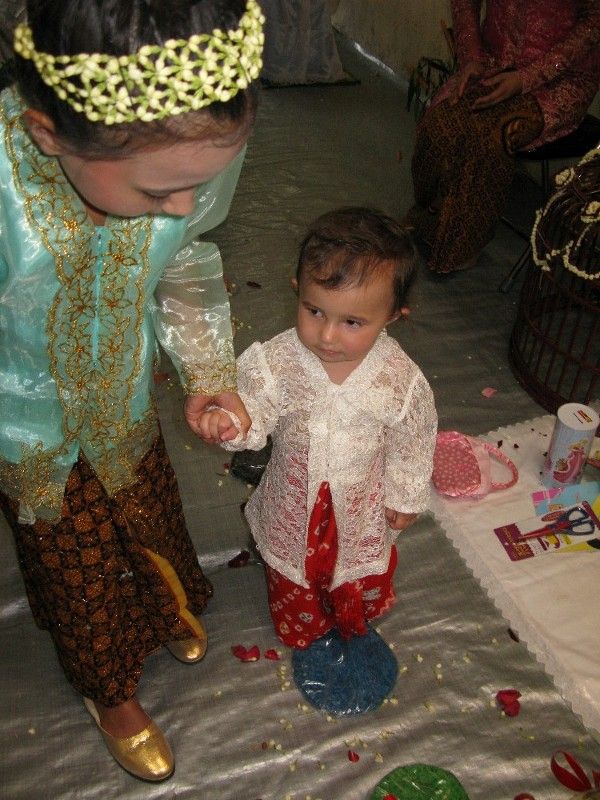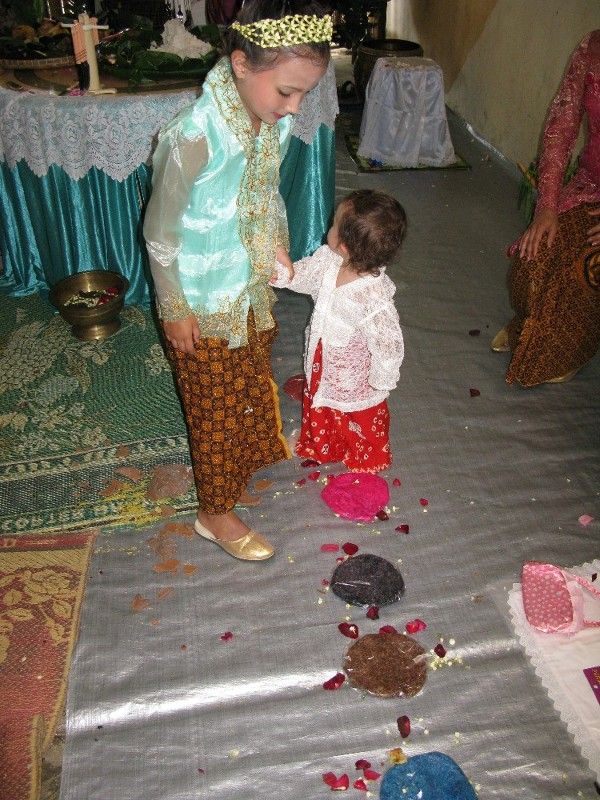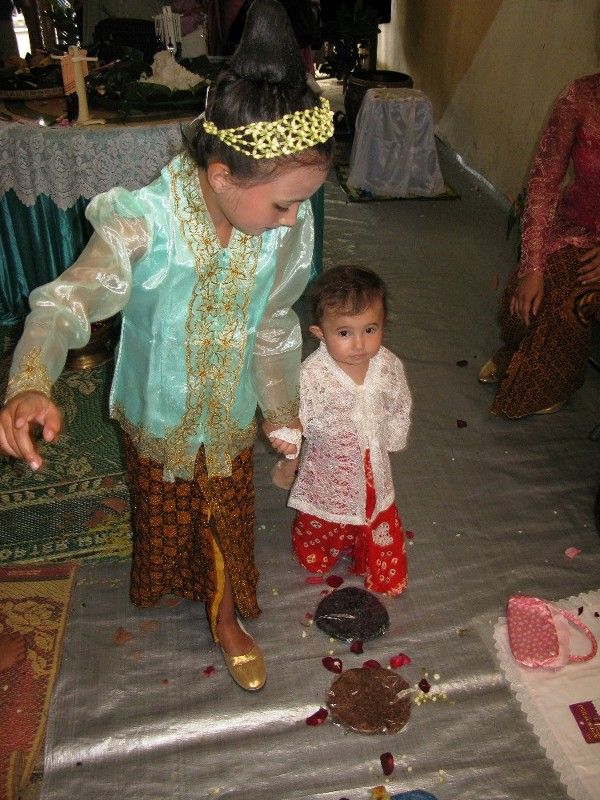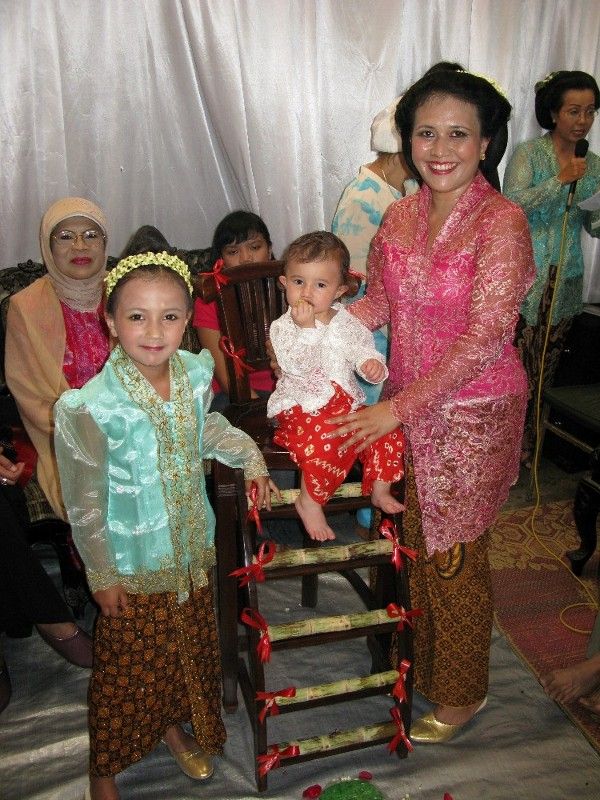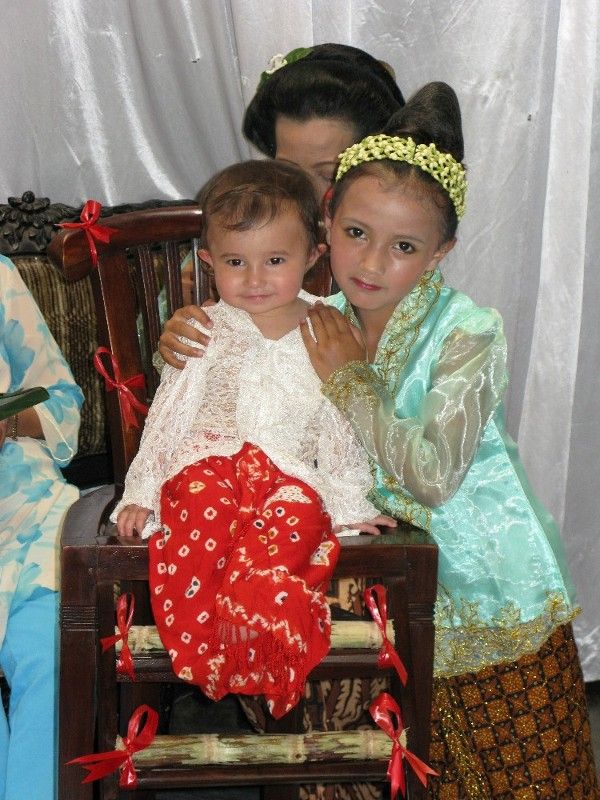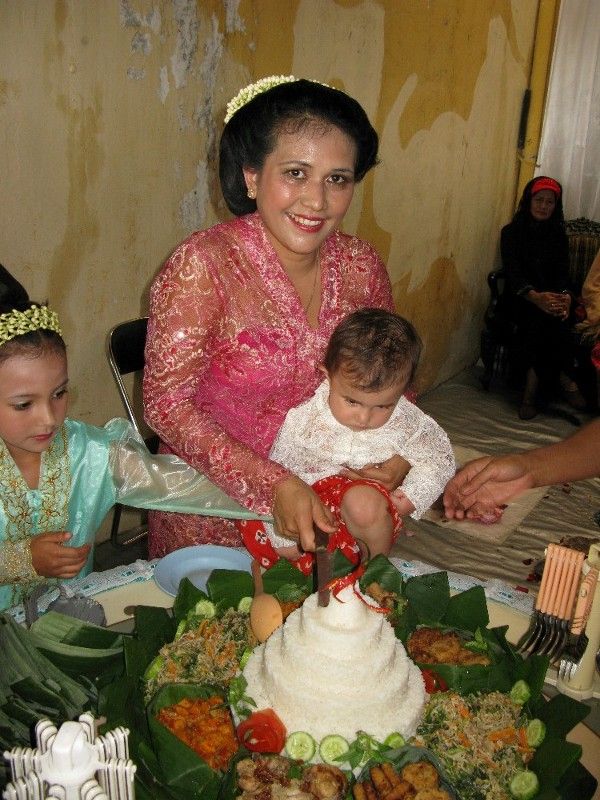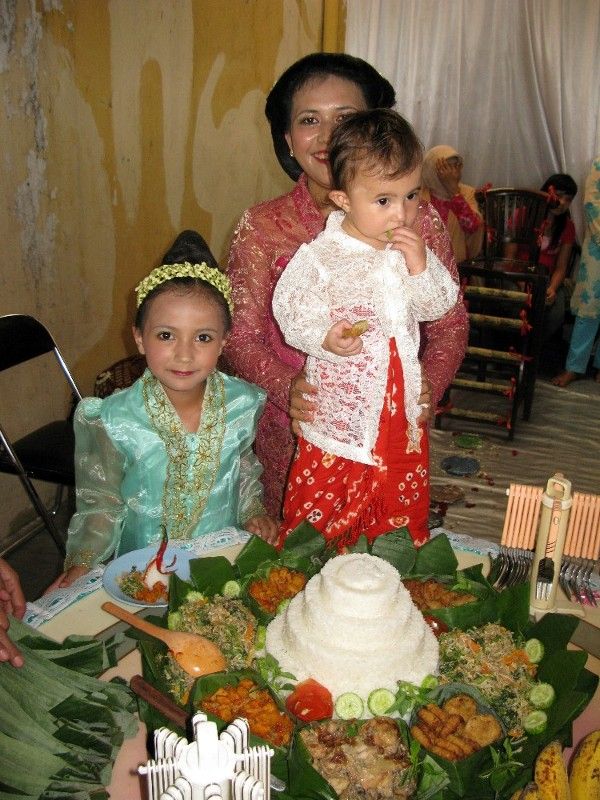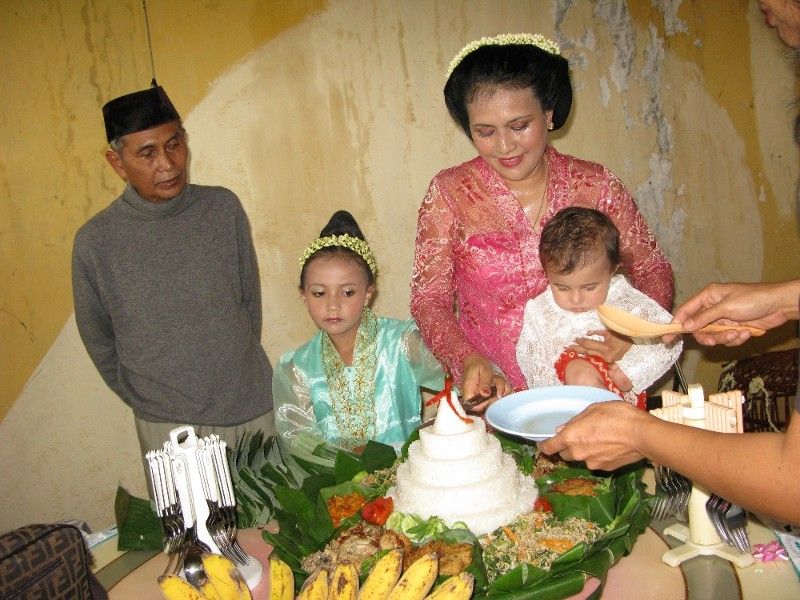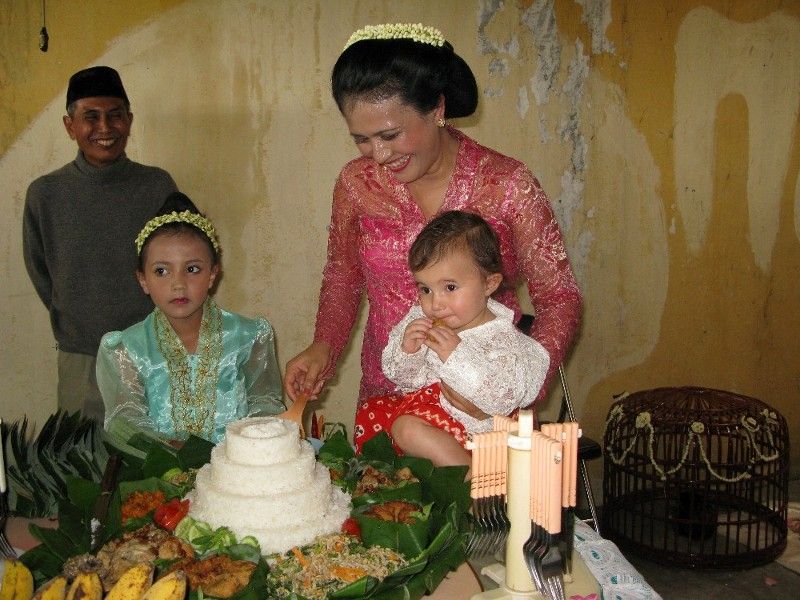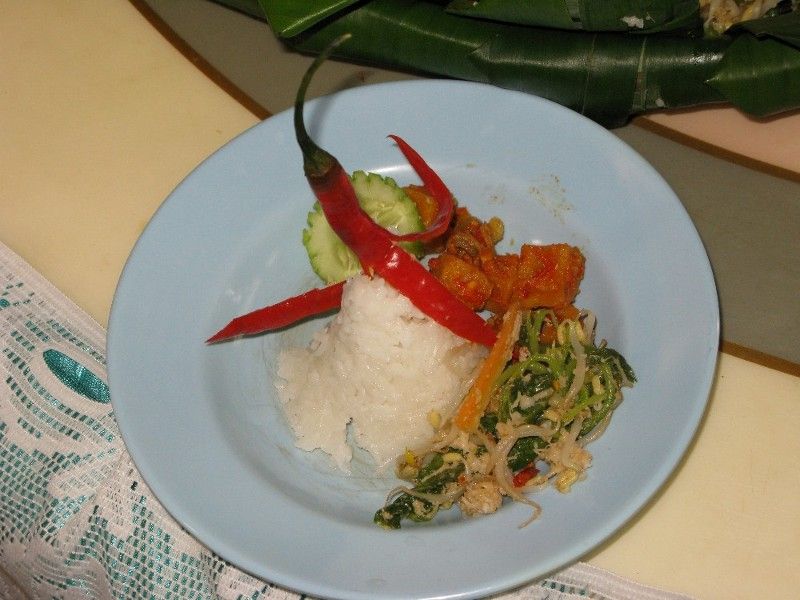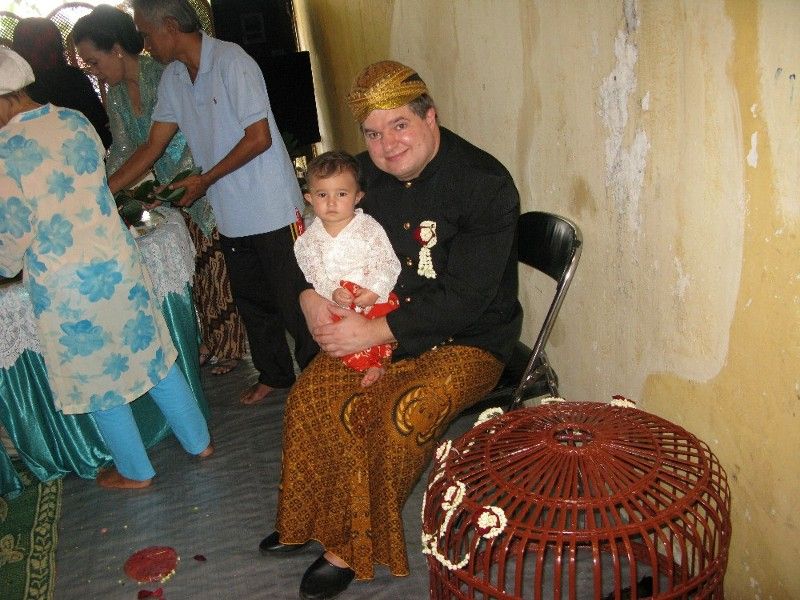Turun Tanah Rituals
The baby is guided to walk on a path of 7 different colours (red, white, orange, yellow, green, blue, and violet) of glutinous rice plates, or jadah or tetel. They are made from glutinous rice, mix with young coconut grating and a pinch of salt. The colour of these plates symbolizes different steps in life. They are arranged from darker colour to brighter colour. The baby must step from the darker plate to the brighter plate, from darkness in life to clarity. The child will be able to overcome all obstacles in life.
The baby is guided to climb on a 7 steps ladder made of Arjuna, sugar-cane and then guided to step down the ladder. Sugar-cane (or tebu in Javanese) represents strong will, and is a short form of antebing kalbu or heart's will. Passing the Arjuna sugar-cane ladder ritual is a symbol that he/she should walk in life with confidence and determination, like the heroic Arjuna character (a noble warrior character of a Wayang puppet play).
The baby is guided to walk on a pile of sand. He should do ceker-ceker or to scratch the sands with both feet like a rooster. This ritual shows that the baby will have to work and to earn something to fulfil his/her need.
The baby is guided into a decorated chicken's cage by his/her mother (sometime the mother accompany the baby inside the cage) and be locked inside. There are several items inside the cage, such as writing-books, jewelleries, golden accessories- ring, necklace, bracelet, rice, cotton and other useful items. The parents let the baby chooses one item. If the baby takes the writing-book to play, then he/she could be working in an office or be a professor. If the baby took the jewelleries, then he or she could be a rich person. The cage (as well as the mother inside the cage) represents the guardians of the child when entering life.
Following the above rituals, the parents throw udik-udik, a mixture of coins, yellow rice and flowers to the people who are attending the ceremony. This ritual represents a wish for the baby to have a prosperous life and to be generous to help other people.
